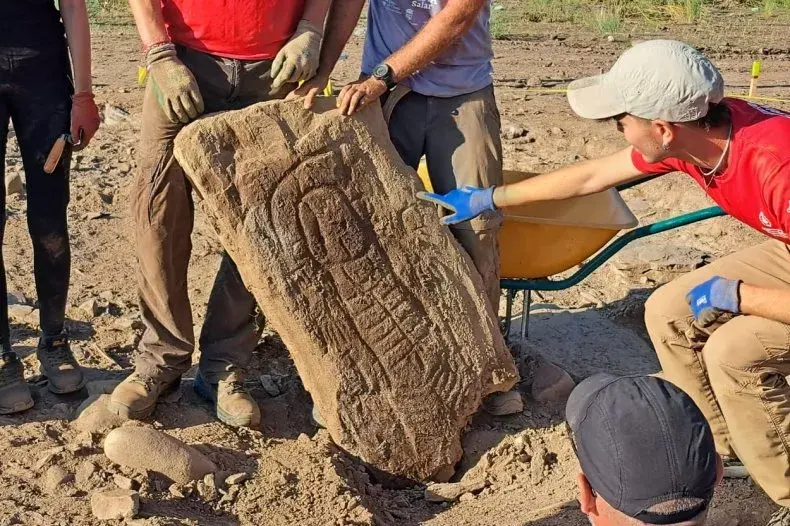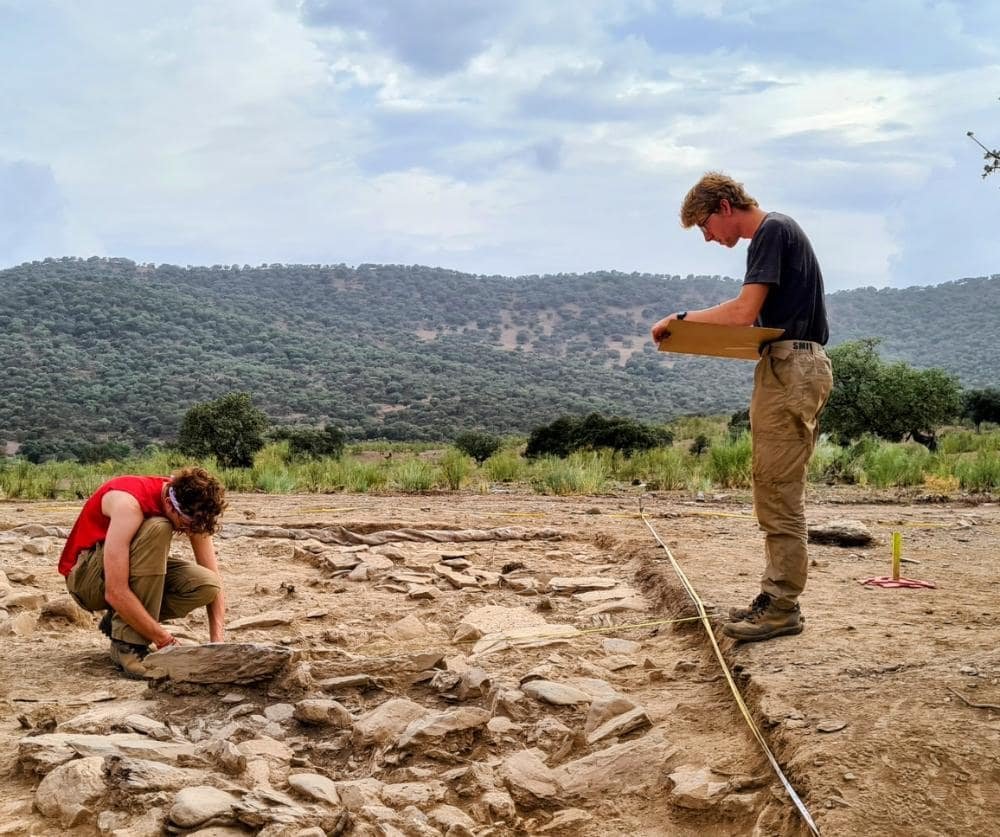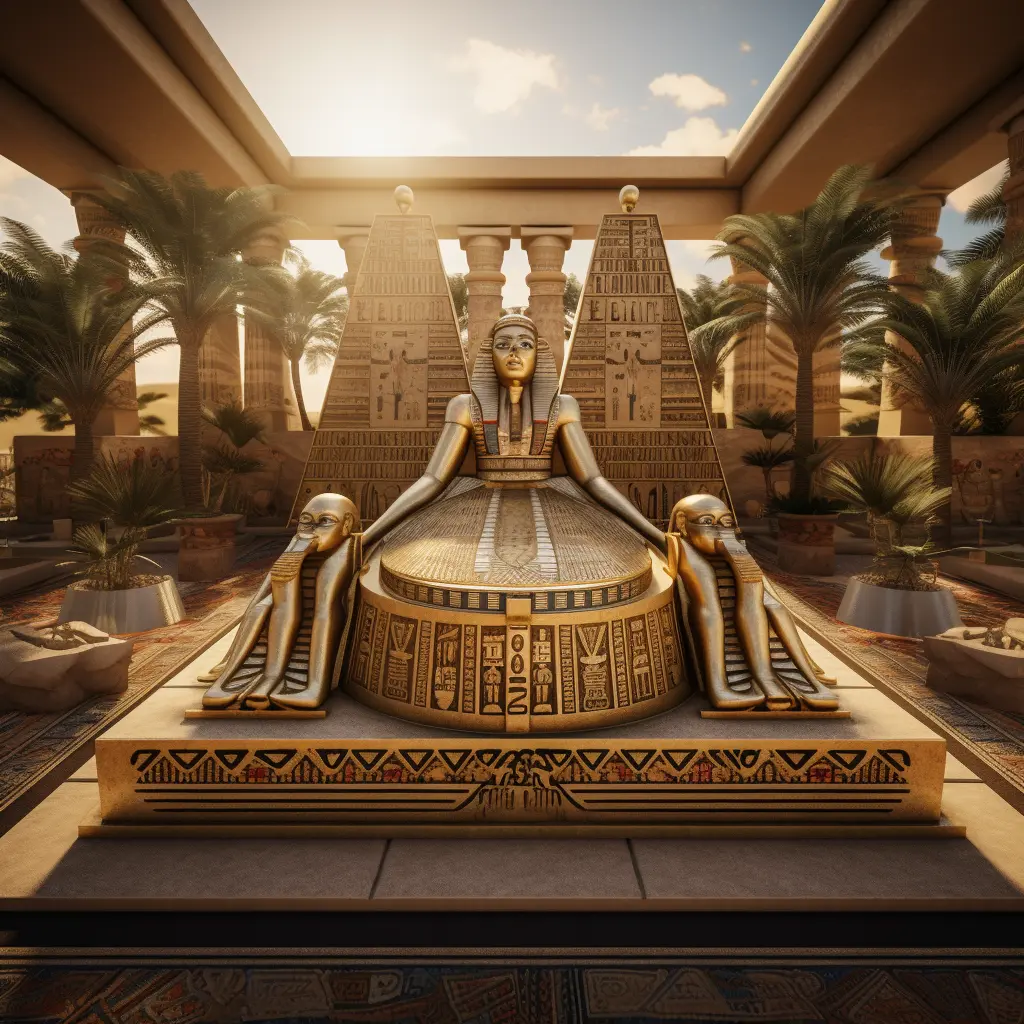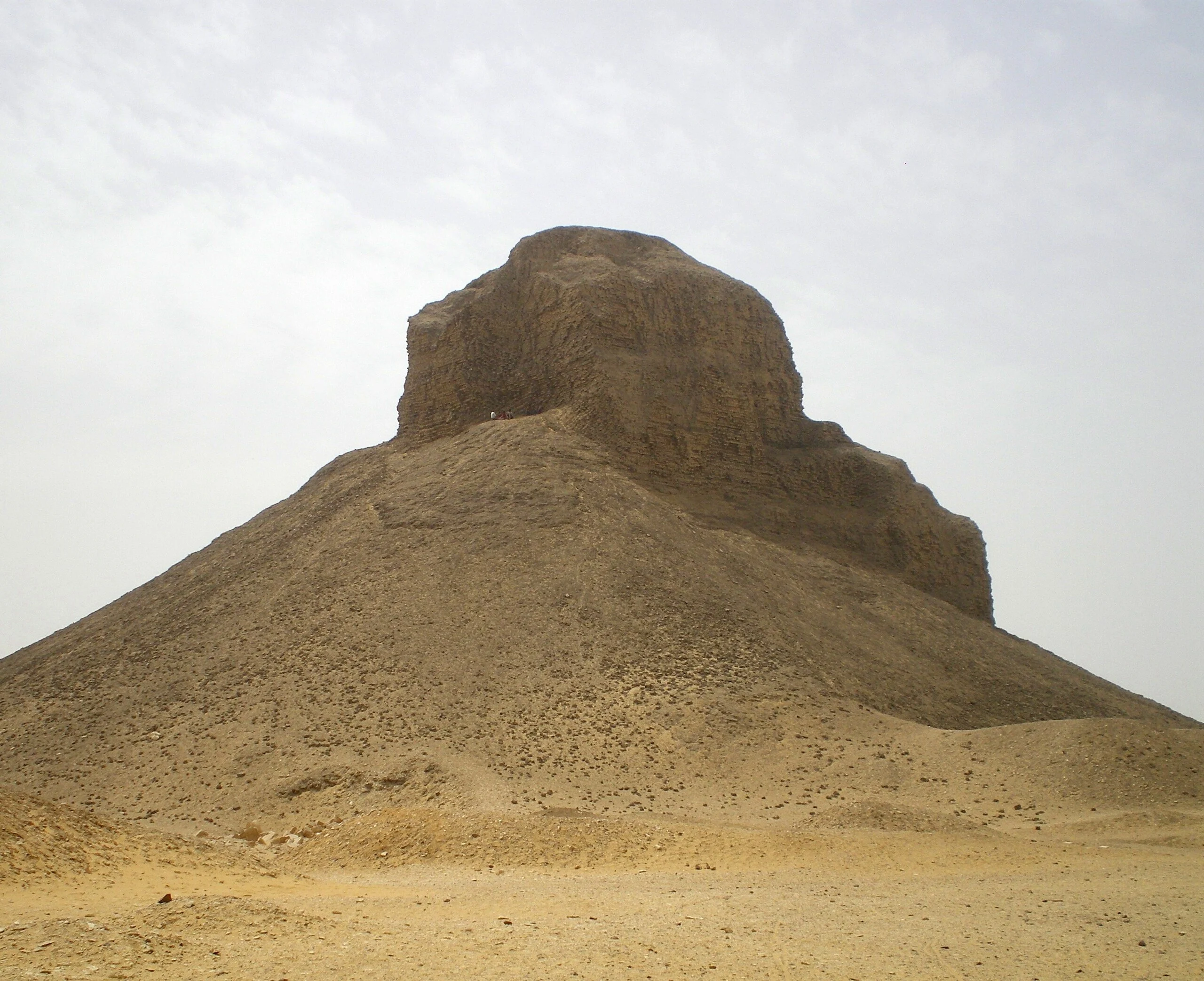
Archaeologists uncovered a freshly decorated stela in the 3000-year-old Las Capellanas burial complex in Caaveral de León (Huelva, southwestern Spain).
Las Capellanas is being excavated as part of a fieldwork project co-directed by Dr. Marta Diaz-Guardamino of the Department.
It is believed that late prehistoric stelae in Iberia were built to memorialise significant people. This new stela depicts a human figure wearing a headpiece, wearing a necklace, and wielding two swords. In addition, the figure includes a detailed face, hands, and feet, as well as male genitals.
A stela is a commemorative stone slab or pillar that has been carved or engraved. Text, decoration, or both are frequently found on the surface of a stele.
To begin, this is the third adorned stela discovered at this site, and the second in context. The first stela discovered last year was a warrior stele.
Warrior stelae are enormous stone slabs depicting warriors surrounded by equipment such as swords, shields, spears, and other things of distinction such as personal care utensils, chariots, dogs, or lyres.
There are currently about 150 in all of Iberia. These monuments are considered to portray the social goals of deceased elite individuals who were remembered as forefathers of the community through this medium.
Warrior stelae are commonly discovered during agricultural labour, and little is known about their archaeological setting. That is why this summer’s revelation was so remarkable. Caaveral 2 (the second stela discovered in this location) was discovered layered inside the limits of a massive necropolis consisted of different tumuli with cists (little stone-built coffin-like boxes or ossuaries).

Despite almost 120 years of investigation, the settings of use of late prehistoric stelae in Iberia are mostly unclear. The discovery is especially significant because it verifies what the second stela discovered at the site had suggested (together with some previously known indirect evidence): late prehistoric adorned stelae were largely utilised as burial monuments within mortuary complexes.
This also suggests that stelae-making was a meaningful activity carried out as part of funerary ceremonies in Late Bronze Age and Early Iron Age Iberia. The discovery of three stelae at the Las Capellanas funerary complex suggests that previous finds of other grouped stelae, such as those found in Hernán Pérez in northern Cáceres, central-west Spain, and now housed in the National Archaeology Museum in Madrid, could have corresponded to stelae that were originally set in funerary complexes.
Las Capellanas (like Hernán Pérez) is also situated on one of the most important natural corridors connecting two major river basins. These roads were important communication ‘highways’ between the middle and lower Guadiana basins during late prehistory. For Hernán Pérez, this ‘highway’ ran across the Gata mountain range between the middle Tagus and the middle Duero.
Las Capellanías’ location here is crucial, especially when we consider where funerary sites and communities are on these ‘highways’. This demonstrates how the function of adorned stelae as territorial markers related to their function as burial monuments.
Challenging Binary Gender Norms
This discovery is especially noteworthy for what it reveals about prior gender interpretations of the figures depicted on stelae. It demonstrates that earlier interpretations are more related to our present binary gender notions than to those of prehistoric societies.
This modern Caaveral de León stela incorporates details such as a necklace or a headpiece. These are generally seen on ‘headdress’ (or ‘diademated’) stelae and are usually understood as female. Male characteristics are frequently found on so-called ‘warrior’ stelae (such as swords). This gendering of standardised iconographies (which may or may not be related to specific social positions) was predicated on a relatively tiny percentage of cases expressing sexual physical features. Four stelae were discovered with female sexual traits and headdress features out of a total of 31. Out of 147, four had male genitals and ‘warrior’ associated gear.
Caaveral de León’s stela 3 changes everything.
It blends ‘headdress’ and ‘warrior’ characteristics, demonstrating that the social roles indicated by these standardised iconographies were more variable than previously imagined. Furthermore, the presence of male genitalia on the new stela suggests that these social functions were not limited to a single gender, but could be connected with multiple genders.
This fieldwork project is part of the Maritime Encounters project, which is financed by the Riksbankens Jubileumsfond (RJ). Dr Marta Daz-Guardamino leads this research for Iberia, with funding from Durham University’s Department of Archaeology, in collaboration with and supported by Timoteo Rivera and Prof. Leonardo Garca Sanjuán (University of Seville) and Prof. David Wheatley (University of Southampton).



